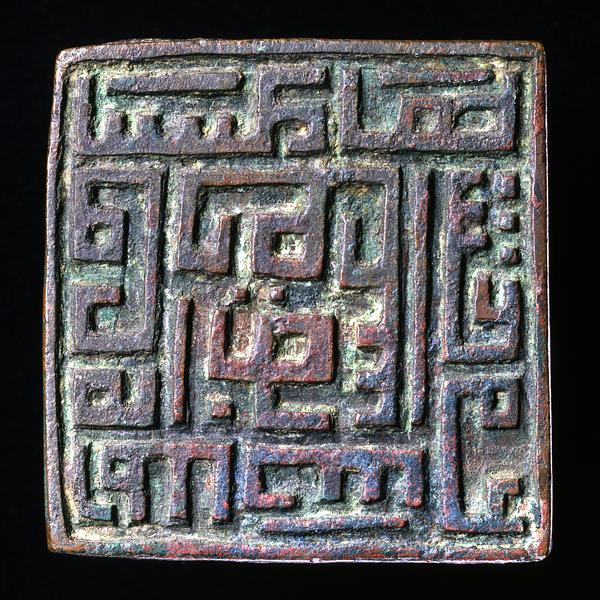Square seal, cast bronze
Western Iran; 14th century
5.8 × 5.7 cm
Under the Il-Khanids, a very angular version of the Kufi script – often designated as seal Kufi – became popular for decrees, coins, and inscriptions in architecture. It was highly reminiscent of the characters on Far Eastern seals of a type that was introduced under the Mongol Great Khan, the Yuan emperor Kublai Khan.
The mirror-image inscription translates as, “Abu Ishaq, the sheikh, the guide – may God sanctify his soul.” Abu Ishaq (963-1033) was the founder of a Sufi order whose most important shrine was in Kazerun, in the western Iranian province of Fars. The site was visited by many pilgrims, who undoubtedly considered impressions of seals like this to be holy, having a talismanic effect.
Inv. no. 7/1996
Published in:
Linda Komaroff and Stefano Carboni (eds.): The legacy of Genghis Khan: courtly art and culture in Western Asia, 1256-1353, Metropolitan Museum of Art, New York 2002, fig. 146, cat. 167;
Sheila S. Blair and Jonathan M. Bloom (eds.): Cosmophilia. Islamic Art from the David Collection, Copenhagen, McMullen Museum of Art, Boston College, Boston 2006, cat. 35;
Yuka Kadoi: Islamic chinoiserie: the art of Mongol Iran, Edinburgh 2009, fig. 3.9;
Joachim Meyer and Peter Wandel: Sufisme: islams mystiske vej, Davids Samling, København 2011, pp. 34-35;
Annabel Teh Gallop and Venetia Porter: Lasting impressions: seals from the Islamic world, Islamic Arts Museum Malaysia, Kuala Lumpur 2012, p. 102;
Joachim Meyer, Rasmus Bech Olsen and Peter Wandel: Beyond words: calligraphy from the World of Islam, The David Collection, Copenhagen 2024, cat. 122, p. 295;
